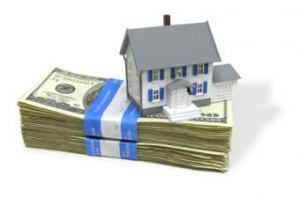Affordability Issues Create Housing Bubble Concerns

Recovery in the housing market is not without its side effects, particularly in major metro markets on the West Coast and in Florida. A look into 35 major markets by Zillow reveals that buyers making the median income in Southern California, the Bay Area, Portland (Oregon), Denver, and Miami face markets where more than half the available homes are beyond their price range—which could mean the beginning of a new housing bubble.
Zillow’s latest report, released Friday, found that buyers who make the median income in Los Angeles, San Francisco, and San Jose are paying a larger share of their income toward mortgages than they did during the pre-bubble years of 1985 to 2000. In addition, median-income buyers in San Diego; Riverside, California; Portland; Sacramento; and Miami typically pay 5 percent mortgage interest rates, meaning these buyers are also paying more of their incomes towards mortgages than they have historically.
Freddie Mac announced this week that the average 30-year fixed mortgage rate nationally is 4.41 percent; Zillow expects 30-year fixed rate mortgages to reach or exceed 5 percent by the first quarter of 2015.
The largest gulf in affordability is in Miami, where 62.4 percent of houses are beyond the reach of the average resident. Los Angeles, San Diego, and San Francisco each have more than 55 percent of their homes above the means of the average resident. Denver, San Jose, and Portland are at just over 50 percent.
Moreover, existing mortgage holders in these markets are typically spending more than 40 percent of their monthly income on their mortgages. Consequently, more buyers are forced to look farther out into peripheral markets surrounding metro hubs for more affordable homes.
Comparatively, about 33 percent of homes in the other 28 markets surveyed by Zillow are out of reach to the average buyer, which is typical. Better news for those making median income in cities such as Dallas, Seattle, and Philadelphia is that in addition to a sizeable number of within-reach homes, average residents spend a far smaller percentage of their income on their homes. In some areas, such as large cities in Ohio, Atlanta, and Dallas, owners are paying less than 12 percent of their monthly income toward mortgages.
If Zillow’s predictions of 5 percent mortgages come true and if rates at that level and another year of forecasted home value growth pan out as expected, buyers in California, Portland, and Miami will also soon be paying a larger share of their incomes to their mortgage than they were during the pre-bubble years.
What this translates into for Stan Humphries, Zillow’s chief economist, is worry of a new bubble. “As affordability worsens, we’re already beginning to see more of the kinds of worrisome trends we saw en masse during the years leading up to the housing crash,” Humphries said. Specifically, he cited a growing reliance on non-traditional home financing, smaller down payments and a greater pressure to move farther away from urban job centers in order to find affordable housing options. “We’re not in a bubble yet, but we’re beginning to see the early signs of one in some areas.”
